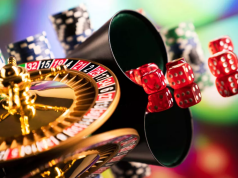Brandy, often referred to as the “nectar of the gods,” is a spirit with a rich history and a complex, nuanced flavor profile that has captivated connoisseurs for centuries. Crafting fine brandy is an art that requires skill, patience, and a deep understanding of the distillation process. In this article, we will delve into the fascinating world of brandy production, exploring the techniques and traditions that go into crafting excellence.
The Origins of Brandy
Brandy’s origins can be traced back to the early days of distillation, which likely began in the Middle East or Asia over a thousand years ago. The word “brandy” itself is derived from the Dutch word “brandewijn,” which means “burnt wine.” This name is fitting, as brandy is essentially distilled wine or fermented fruit juice, resulting in a more concentrated and potent alcoholic beverage.
Ingredients Matter
The first step in crafting minőségi pálinka is selecting the right ingredients. While grapes are the most common base for brandy production, various fruits, such as apples, pears, and cherries, can be used to create different styles and flavors of brandy. The choice of fruit and its quality play a crucial role in the final product’s character.
Fermentation and Distillation
Once the fruit is chosen, it is crushed, and the juice is extracted. This juice is then fermented, a process in which yeast converts the sugars into alcohol. The resulting liquid, known as wine or “mash,” is then ready for distillation.
Distillation is the heart of brandy production. The goal is to separate the alcohol from the impurities, producing a clear and potent spirit. This process involves heating the wine or mash and collecting the evaporated alcohol vapor, which is then condensed back into liquid form. The distillation process is typically carried out in traditional copper pot stills or column stills, each contributing to the unique character of the brandy.
Aging and Maturation
After distillation, the brandy is transferred to wooden barrels for aging and maturation. This is where the spirit develops its complexity and depth of flavor. The choice of barrels, the length of aging, and the environmental conditions in the aging cellar all influence the final product.
During the aging process, brandy interacts with the wood, absorbing flavors and aromas. The spirit also undergoes slow oxidation, which softens harsh flavors and brings out subtle nuances. Brandies are often aged for several years, with some premium varieties spending decades in barrels.
Blending and Bottling
Blending is an essential step in brandy production, especially for brands known for their consistency and distinctive flavor profiles. Master blenders carefully select and mix different batches of aged brandy to achieve the desired taste and balance. This skillful art of blending is what sets renowned brandy houses apart from the rest.
Once the brandy is blended to perfection, it is typically diluted with water to reach the desired bottling strength. The final product is then filtered and often caramel coloring is added to achieve the desired color.
Appreciating Fine Brandy
Fine brandy is best enjoyed in a tulip-shaped glass, which concentrates the aromas and allows you to fully appreciate the spirit’s complex bouquet. Swirl the brandy gently to release its aromas and take in the rich scents of fruits, spices, and oak.
Sipping brandy is an experience to savor, as its flavors evolve on the palate. Fine brandy offers a symphony of tastes, from the initial fruity sweetness to the warming notes of spice, vanilla, and oak. The finish is often long and satisfying, leaving a lingering warmth in the throat.
In conclusion, crafting excellence in the world of brandy requires a deep respect for tradition, a keen understanding of the distillation process, and the patience to allow time and nature to work their magic. Fine brandy is not just a spirit; it is an art form that embodies the essence of the fruit from which it is born and the craftsmanship of those who bring it to life. So, the next time you raise a glass of brandy, take a moment to appreciate the centuries of tradition and craftsmanship that went into creating that exceptional liquid gold in your glass.




